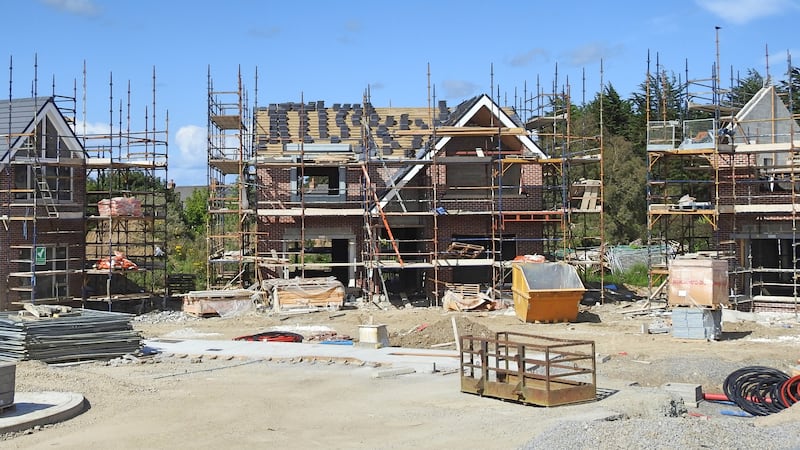Carraroe, or an Cheathrú Rua, in South Connemara, Co Galway, is known for the coral sand of Trá an Dóilín, the rugged scenery that has attracted artists and writers for generations, and its language.
Less widely celebrated is the fact that it pumps 1,300 wheelie bins of sewage directly from Sruthán Pier into the waters of Casla Bay each day, because its wastewater system is not connected to a treatment plant. Carraroe is not unique; it’s one of 26 towns and villages discharging raw sewage. Not to worry: Carraroe’s problems should be fixed by 2027.
Or take Howth, the North County Dublin village famous for its seafood, stunning views and spectacular house prices; not so renowned for the fact that raw sewage still pours from 20 or so houses on the southside of the peninsula, down a visible outflow pipe and straight into the picturesque waters of Doldrum Bay. How many of those wandering the Howth cliff path or snapping a shot of a distant Baily Lighthouse for their Instagram feed want to think about the filth swirling in the waters beneath? The situation was supposed to have been rectified by 2011, but it took until September 2022 before new water treatment plans were finally unveiled. According to a damning EPA report published this week, the project is due to be complete by 2024, though work had yet to commence by July this year.
Kilmore Quay, Kilkee, Liscannor, Falcarragh: some of the hidden jewels of Ireland’s coastline, each with the same embarrassing leakage problem. A further 15 urban areas were failing to meet EU standards: they include the Greater Dublin Area; Cork City; Skibbereen and Clonakilty in Co Cork; Limerick; Lahinch, Co Clare; and Arklow in Co Wicklow.
READ MORE
Three Olympic pools’ worth: that’s the amount of untreated effluent being pumped into the waters around Ireland every day
The best little country in the world in which to catch e.coli? Probably. Actually forget all the “best little country” shtick – if there is actually a mission statement for Ireland Inc, it’s “be grand”. Falling short of our capital spending targets on social and affordable housing? Be grand. Overshooting the health budget by €1.5 billion? Be grand. Still swimming in your own sh*t? Be grand.
Three Olympic pools’ worth: that’s the amount of untreated effluent being pumped into the waters around Ireland every day. Challenged on why we’re falling short of our own standards on any front, the same boilerplate excuse is rolled out – that’ll be the historic underinvestment.
There is truth in that, but progress in addressing the raw sewage pouring into the sea – at a time when the exchequer’s coffers are overflowing like a century-old sewage pipe and the Green Party is in Government – has been inexcusably slow. The Environmental Protection Agency (EPA) says Uisce Éireann is “taking too long to identify and deliver the works needed” and that less than half – 45 per cent – of waste water is treated to standards set by the EU three decades ago. When the upgrade of Ireland’s largest treatment plant at Ringsend beside Dublin Bay is complete, that figure is expected to rise to over 90 per cent. However, it will still take a multibillion-euro investment, and at least two decades, to bring wastewater treatment systems up to standard.
It’s not as if there is a shortage of money being thrown at the problem. In a characteristically upbeat response to the EPA report, Uisce Éireann points out that 2022 saw the highest annual investment in wastewater to date of over €450 million and it “continues to make progress in priority areas such as locations where there is raw sewage entering the rivers, lakes and the sea [and] sites identified by the European Court of Justice under the Urban Waste Water Treatment Directive”.
Despite all the investment, the number of urban areas failing to meet the standard declined between 2021 and 2022. Five of the urban areas that failed the treatment standards in 2022 complied the previous year
“Ending raw sewage discharges and improving wastewater treatment for cities, towns and villages across the country are priorities for Uisce Éireann ... To date over 70 per cent of raw sewage discharges nationwide have been eliminated and we are on track to end the majority by 2025,” said Brian Sheehan, its head of infrastructure delivery.
That all sounds reassuring – until you discover that even some of the upgraded plants are still pumping out inadequately treated wastewater. Despite all the investment, the number of urban areas failing to meet the standard declined between 2021 and 2022. Five of the urban areas that failed the treatment standards in 2022 had been in compliance the previous year.
The EPA is clear that it sees this as anything but grand: “Poor management practices at upgraded plants, such as Skibbereen and Courtmacsherry, caused inadequately treated sewage to discharge into the environment.”
Of the 26 towns and villages without a sewage system in 2022, new treatment plants were recently completed at just two – Kerrykeel in Co. Donegal and Liscannor in Co. Clare.
Since we seem incapable of respecting the environment for its own sake, we should look to the approach of New Zealand, which designates rivers and lakes as being of national tourism significance as part of a wider sustainable water programme, a cross-governmental initiative involving its Department of the Environment and the Department of Agriculture and Forestry. A report commissioned by Fáilte Ireland in 2009 identified 104 waters of national tourism significance, and recommended they get special protection status. If we can protect buildings of heritage interest and offer special status to areas of importance to wildlife, why can’t we do the same for stretches of the coast and inland waterways of importance to humans?
Otherwise, the approach seems to be that if you can’t see it, or at least if you can’t actually smell it, it’ll be grand.












